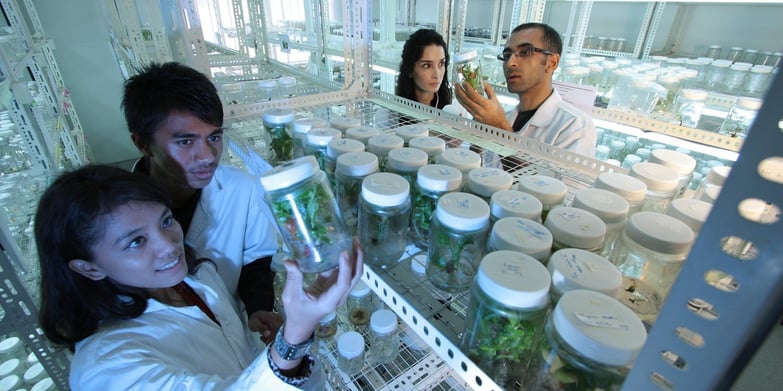
The concept of pH is taught to students at an early age. Starting in grade school, substances are classified as acids, bases, or neutral; continuing through secondary school and university, pH and related concepts are taught more in depth. pH is a critical parameter in a multitude of industries, including food and beverage, pharmaceutical, wine, plating, textiles, water treatment, and more.
Many graduating students, especially those with a focus on science, will need to measure pH in the course of their professional careers. Therefore, an understanding of the theory of pH, how to correctly measure pH, and how to maintain and troubleshoot a pH meter and electrode are invaluable skills for graduates to have.
Due to large class sizes and budget restrictions, many schools and universities are unable to invest in the necessary quantity of analytical equipment such as pH meters. These teachers and professors may resort to using less expensive methods to teach pH, such as chemical test kits or litmus paper. Alternatively, they may have only one or two instruments for demonstrations or for students to share. As a result, many students graduate never having the opportunity to work with the types of pH meters they may encounter in the work force.
A university contacted Hanna Instruments looking to purchase affordable, easy to use pH meters for their introductory chemistry class. Each laboratory class had 15 to 20 students enrolled, and as part of the class curriculum the professor wanted to ensure that the students learned how to properly use a pH meter. Due to budget restrictions, the professor was initially considering one research grade meter for their research projects and seven to ten inexpensive pocket meters. However, during a follow-up phone call, the Hanna sales representative learned that the professor had access to five iPads for use in their classroom and teaching laboratory.

Hanna recommended the HALO Glass Body Refillable pH Electrode with Bluetooth® - HI11312. The HI11312 is a glass body electrode that transmits data wirelessly to a smartphone or tablet that is running the free Hanna Lab App. The professor was impressed at how the Hanna Lab App turns a smart device into a full-featured pH meter, with functions including calibration up to five points, choice of standard or custom calibration buffers, continuous data logging and graphing, and data transfer.
The 10-meter Bluetooth range of the electrode allowed flexibility for the students to rotate between stations during the lab without having to move the iPad. The professor appreciated the built-in temperature sensor on the HALO, eliminating the need for an external temperature probe to ensure accurate, temperature compensated readings. The option to view pH as a mV reading allowed the professor to more easily teach their students about the relationship between pH, mV, and the Nernst equation; this also allowed the students to learn how to objectively assess the condition of the electrode by using the mV readings to determine electrode offset and slope.
With a simple swipe of the screen to access the navigation tray, the professor and the students could access menus including the Help menu, which included useful resource information such as best practices for electrode calibration, cleaning, and storing, and an overview of general pH theory. The professor was thrilled that the HI11312 HALO in conjunction with the Hanna Lab App and iPad offered research grade functionality at a pocket pH meter price, providing affordable equipment for their laboratory class.
That's why we've dedicated our blog as a helpful resource for you to use! Catch up on the latest products, explore industry trends, discover testing tips, learn how to improve results, and more. Got questions? Email sales@hannainst.com.
